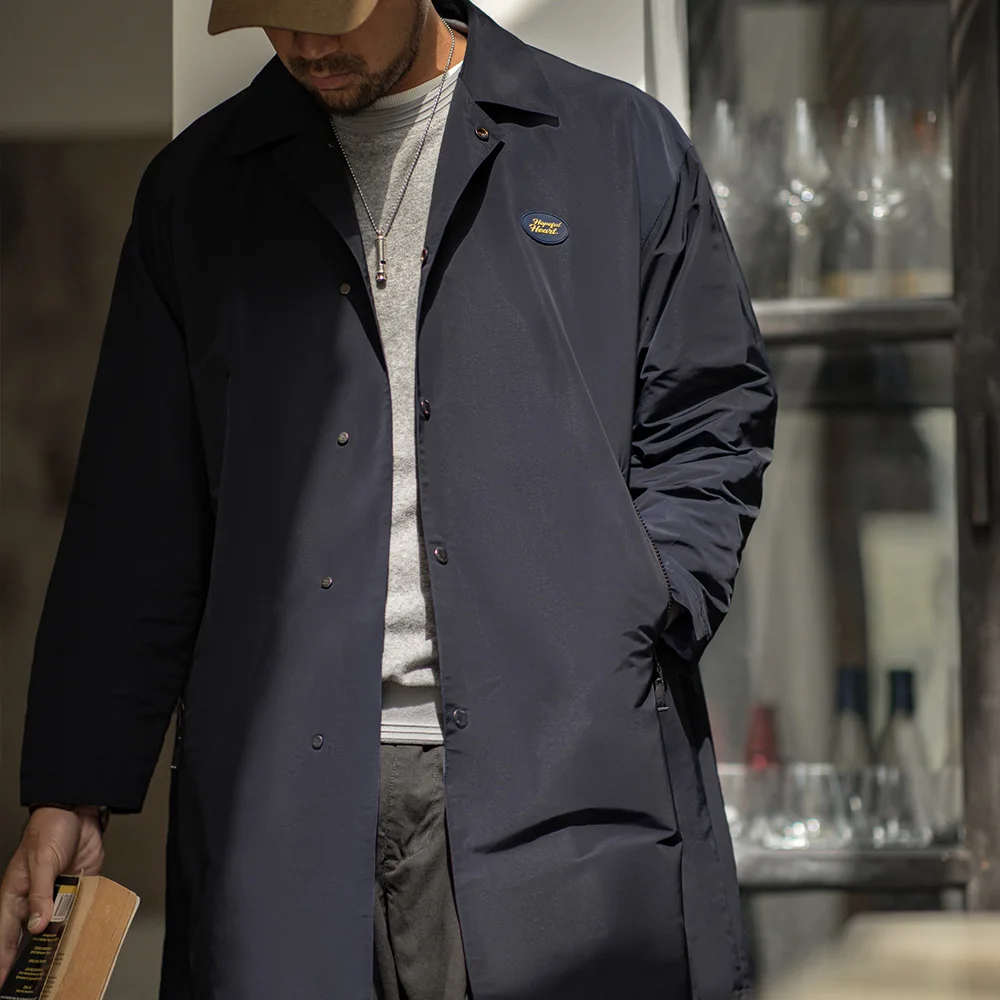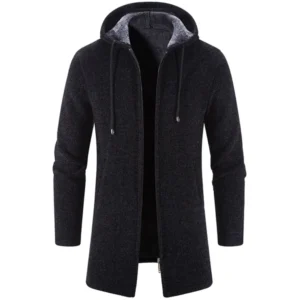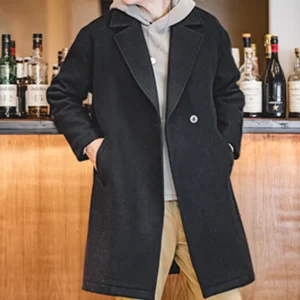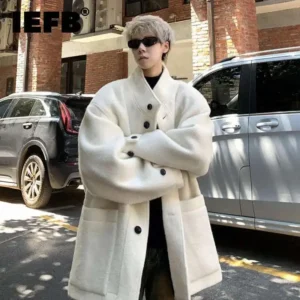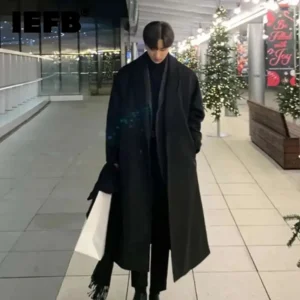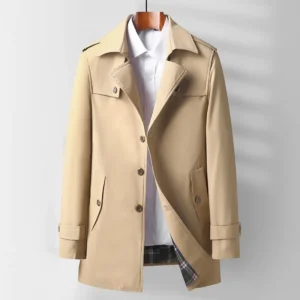Introduction: The Enduring Charm of Classic Tweed
Few garments carry the distinguished heritage and versatility of a vintage tweed coat. This timeless piece combines rugged durability with refined elegance, making it a cornerstone in the modern gentleman’s wardrobe. What gives tweed its enduring appeal is not just its visual texture—those characteristic flecks of color woven into robust wool—but its ability to transition effortlessly between formal settings and casual environments.
Choosing vintage tweed represents more than just a style statement; it’s an investment in sustainable fashion. These garments were crafted in an era when clothing was built to last generations, not seasons. The tight weave, sturdy construction, and natural wool fibers ensure exceptional longevity while offering superior protection from the elements.
The unique texture and structural integrity of tweed bring instant character to any outfit. Whether draped over tailored trousers or paired with casual denim, a well-chosen men’s tweed coat provides both warmth and distinctive style that contemporary fast fashion simply cannot replicate.
In this guide, we’ll explore multiple approaches to styling your vintage tweed coat—from business settings to weekend outings—proving that this heritage piece remains remarkably relevant in today’s fashion landscape.
Understanding Your Vintage Tweed: Materials, Fit and Foundations
Before diving into styling options, it’s essential to understand what makes your particular tweed coat special. Tweed comes in several distinct varieties, each with characteristics that influence how you might wear it:
- Harris Tweed: Handwoven in Scotland’s Outer Hebrides, recognized by its slightly irregular texture and rich depth of color
- Donegal Tweed: Distinguished by its colorful flecks or “neps” scattered throughout the fabric
- Herringbone Pattern: Features a distinctive V-shaped weaving pattern that adds visual interest
The weight and texture of your tweed significantly impact styling possibilities. Heavier tweeds (often found in vintage pieces) provide substantial warmth but require thoughtful layering to avoid bulkiness. Lighter tweeds offer greater versatility across seasons.
A properly fitting tweed coat should allow enough room for light layering while maintaining a defined silhouette. The shoulders should align with your natural shoulder line without excessive padding, sleeves should end just at the wrist bone, and the overall length should complement your height and build. Many vintage coats have distinctive best colors for tweed coats that can guide your outfit coordination.
When assessing a vintage piece, check for:
* Intact lining with minimal wear
* Functioning buttons and buttonholes
* Clean lapels without excessive wear
* Proper coat length for your frame
* Even color without sun fading or moth damage
Understanding these foundational elements ensures you’ll make informed styling choices that highlight your coat’s unique character.
Core Styling Principles: Modernizing Vintage Tweed
The Contrast Principle
The secret to making vintage tweed feel contemporary lies in thoughtful contrast. Tweed’s naturally rough, textured appearance creates a perfect opportunity to introduce opposing elements. Pair your rugged tweed with smooth, refined fabrics like crisp cotton shirts, fine merino wool sweaters, or even silk accessories. This textural juxtaposition creates visual depth and prevents the overall look from appearing flat or dated.
Balance and Proportion
Tweed coats—particularly vintage ones—often feature substantial construction. Balance this inherent weight by ensuring proper proportions throughout your outfit. If your coat length and style leans toward the formal end (like a longer overcoat), consider slimmer trousers to create equilibrium. Conversely, a shorter tweed sport coat pairs well with straight-leg trousers or well-fitted jeans.
Color Coordination
Most vintage tweed features a complex blend of earthy tones—browns, greens, blues, and rust colors interwoven to create depth. Rather than competing with this natural palette, build your outfit around complementary colors. Pull out a subtle fleck color from the tweed and echo it in your accessories or underlying layers. For herringbone coat patterns, which tend to be more visually prominent, keep the rest of your outfit relatively understated.
Formality Spectrum
One of tweed’s greatest strengths is its ability to occupy the middle ground of formality. Understanding where your specific coat falls on this spectrum helps determine appropriate pairings. Factors influencing formality include:
- Color (darker = more formal)
- Pattern (subtle patterns = more formal than bold ones)
- Length (longer = more formal)
- Lapel style (notch lapels = more versatile than peak lapels)
By recognizing these principles, you’ll develop an intuitive sense of how to style your vintage tweed coat for various occasions while maintaining a cohesive, intentional appearance.
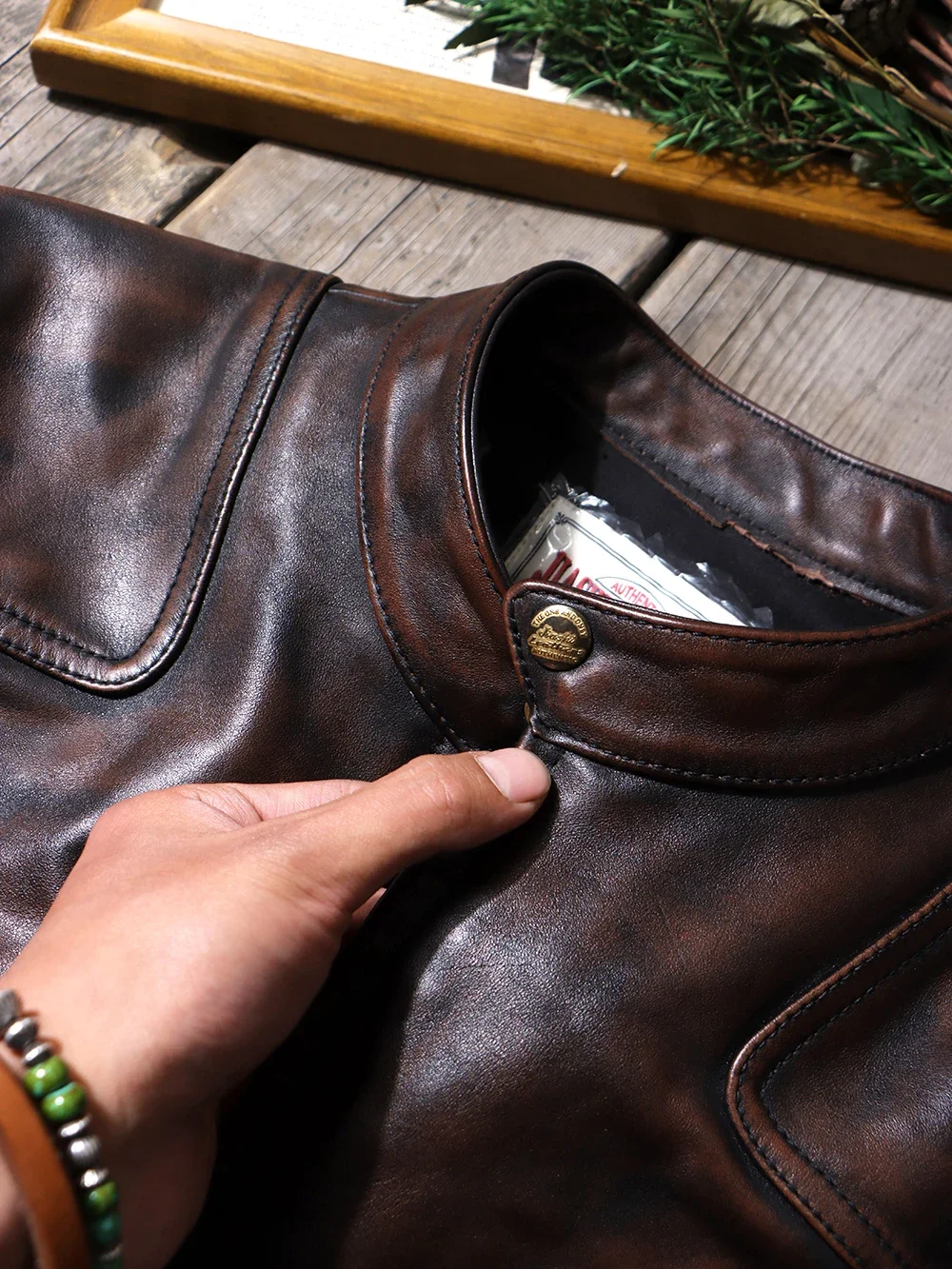
Business and Professional Settings: Refined Tweed Ensembles
Incorporating a vintage tweed coat into your professional wardrobe strikes an effective balance between authority and approachability. For business environments, consider these refined combinations:
Classic Professional: Layer your tweed over a light blue or white dress shirt, navy trousers, and burgundy leather oxfords. A subtly patterned tie picks up secondary colors from the tweed.
Creative Office: Pair with a fine-gauge turtleneck in a complementary color, charcoal wool trousers, and brown suede Chelsea boots for a sophisticated yet relaxed approach.
Business Casual: Combine with a light blue oxford button-down, olive chinos, and brown brogues for an ensemble that navigates the middle ground between formal and casual.
The key to professional tweed styling is restraint with accessories. Choose a single focal point—perhaps a textured pocket square or quality leather watch—rather than overwhelming the already-distinctive coat. This approach acknowledges the ultimate guide for men’s dress coats principles while maintaining individual style.
For more formal business settings, consider how wool overcoats might complement or alternate with your tweed for variety in your professional wardrobe. The textural difference between smooth wool and nubby tweed provides versatility while maintaining appropriate formality.
Casual Weekend Looks: Relaxed Tweed Styling
Weekend wear offers the perfect opportunity to showcase tweed’s versatility through more relaxed combinations. These approachable pairings maintain style without formality:
Contemporary Casual: Layer your tweed over a simple crew neck sweater in a solid, complementary color, paired with dark wash jeans and minimalist leather sneakers. The juxtaposition of traditional tweed against modern basics creates effortless style.
Rugged Sophistication: Combine with a flannel shirt, heavyweight denim, and leather boots for an elevated take on outdoor-inspired style. The natural textures work harmoniously while projecting confidence.
Smart Layering: Place a quilted vest beneath your tweed coat (rather than over it) for added warmth without bulk. Complete with chinos and desert boots for a thoughtfully casual approach.
Accessories for weekend tweed should emphasize function while maintaining style—consider leather gloves, a cashmere beanie, or a simple canvas and leather messenger bag. These practical additions complement the coat’s utilitarian origins.
For those exploring styling options beyond standard single-breasted designs, the principles used in styling double-breasted coats can be adapted effectively for tweed variations, particularly regarding proportions and layering depth.
Evening and Special Occasions: Elevated Tweed Attire
While tweed might not be the traditional choice for formal events, its rich texture and heritage appeal make it a distinctive option for evening occasions that don’t require black tie. For special events, consider these refined approaches:
Theater or Dinner: Pair your tweed coat with charcoal wool trousers, a crisp white shirt, and a knit tie or subtle patterned silk option. Black leather shoes and minimal accessories create a dignified look suitable for cultural events.
Cocktail Gatherings: Layer over a fine merino turtleneck or dark dress shirt, tailored trousers, and polished Chelsea boots for a sophisticated appearance that stands apart from standard evening wear.
Seasonal Celebrations: For holiday events, incorporate subtle festive elements through accessories—perhaps burgundy leather gloves or a dark green pocket square—while maintaining the tweed coat as your statement piece.
When considering formal outerwear options, dress coats and tweed each serve distinct purposes in an evening wardrobe. Where dress coats project straightforward elegance, tweed offers character and texture for less conventional evening events.
The key to evening tweed styling lies in elevating accompanying elements—opt for higher-quality fabrics, impeccable fit, and thoughtful details that honor the coat’s heritage while acknowledging the occasion’s formality.
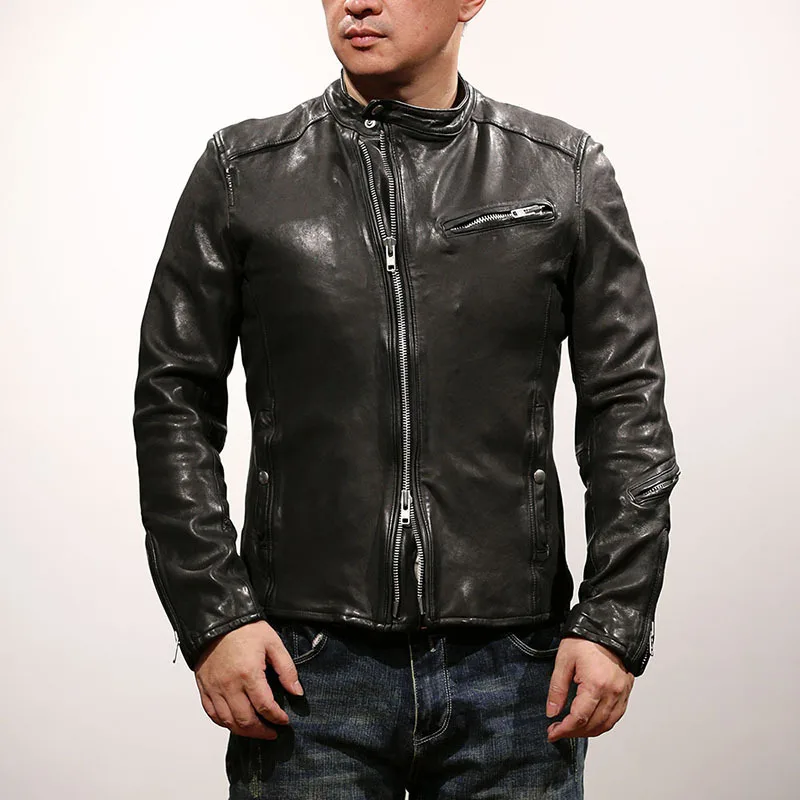
Contemporary Edge: Trend-Inspired Tweed Combinations
Modernizing vintage tweed requires thoughtful juxtaposition of traditional and contemporary elements. These forward-thinking combinations preserve the coat’s heritage while ensuring relevance:
Urban Contrast: Pair your tweed with a monochromatic outfit—black jeans, charcoal sweater, and leather high-top sneakers—to create striking textural contrast against the coat’s multi-toned complexity.
Athleisure Hybrid: Layer over a technical quarter-zip pullover, tailored joggers, and premium minimal sneakers for an unexpected blend of performance and heritage elements.
Statement Accessories: Introduce bold contemporary pieces—a chunky knit scarf in a vibrant color or distinctive eyewear—to create focal points that modernize the traditional coat.
Texture Play: Combine typically opposing elements like distressed denim or nylon accessory pieces with the structured tweed for a deliberately eclectic aesthetic.
Today’s designers often reinterpret tweed through updated cuts, unexpected color combinations, and technical fabric blends. Drawing inspiration from these contemporary approaches while working with your vintage piece creates compelling vintage tweed coat outfits that honor tradition without being bound by it.
Seasonal Adaptations: Styling Tweed Year-Round
While traditionally associated with colder months, a thoughtful approach allows tweed to transition across seasons:
Fall/Winter: Embrace tweed’s natural insulating properties through strategic layering. A lightweight down vest underneath provides core warmth without bulk, while heavy wool scarves and leather gloves complete cold-weather protection.
Spring: As temperatures rise, lighten your layers beneath the tweed. A simple cotton shirt or lightweight merino sweater provides enough warmth for cool spring mornings while allowing comfortable transition to warmer afternoons.
Summer: Reserve tweed for specific summer scenarios—air-conditioned offices, evening events in cooler climates, or seaside locations where temperatures drop significantly after sunset. Pair with linen shirts and lightweight trousers for breathability.
The perfect winter coat length guide principles apply equally to seasonal tweed styling—shorter coats offer greater versatility across seasons, while longer options provide maximum protection during winter months.
Seasonal accessory adjustments—from wool scarves in winter to lightweight cotton or linen options in spring—help tweed transition effectively between weather conditions while maintaining its distinctive character.
Mens Cashmere Overcoat, Mens Hooded Winter Coat, Mens Wool Blend Coat
Price range: $128.72 through $139.68 Select options This product has multiple variants. The options may be chosen on the product pageMens Black Overcoat, Mens Black Wool Coat, Mens Wool Overcoat
$339.18 Select options This product has multiple variants. The options may be chosen on the product pageMens Grey Overcoat, Mens Wool Blend Coat, Mens Wool Overcoat
$201.28 Select options This product has multiple variants. The options may be chosen on the product pageMens Herringbone Coat, Mens Long Overcoat, Mens Wool Overcoat
Price range: $197.16 through $203.69 Select options This product has multiple variants. The options may be chosen on the product pageMens Long Overcoat, Mens Topcoats
Price range: $189.40 through $196.88 Select options This product has multiple variants. The options may be chosen on the product pageMens Long Overcoat, Mens Tweed Coat
Price range: $397.49 through $409.96 Select options This product has multiple variants. The options may be chosen on the product page
Strategic Accessories: Complementing Your Tweed Coat
Thoughtfully selected accessories enhance your tweed coat’s character while creating cohesive, intentional outfits:
Scarves:
* Solid cashmere or lambswool in complementary colors for elegant simplicity
* Subtle patterns (small checks or herringbone) that echo tweed’s texture without competing
* Drape loosely over the coat or use a simple overhand knot to showcase both scarf and lapels
Hats:
* Flat caps in coordinating tweed or solid wool for heritage appeal
* Wool fedoras for more formal interpretations
* Simple beanies in fine-gauge wool for casual contemporary styling
Gloves:
* Deerskin or pebbled leather in brown or tan for natural complement to earth-toned tweeds
* Black leather for higher contrast with lighter tweed varieties
* Suede options for adding textural variety
Bags:
* Leather briefcases with minimal hardware for business settings
* Canvas and leather messenger bags for casual versatility
* Structured tote bags for urban functionality
Eyewear:
* Tortoiseshell or amber frames complement tweed’s natural palette
* Round or oval shapes echo vintage heritage
* Metal frames with colored lenses offer contemporary contrast
When selecting accessories, consider how they interact with your entire collection of overcoats to ensure versatility across your wardrobe. Items that transition between different coat styles provide better value while maintaining stylistic consistency.
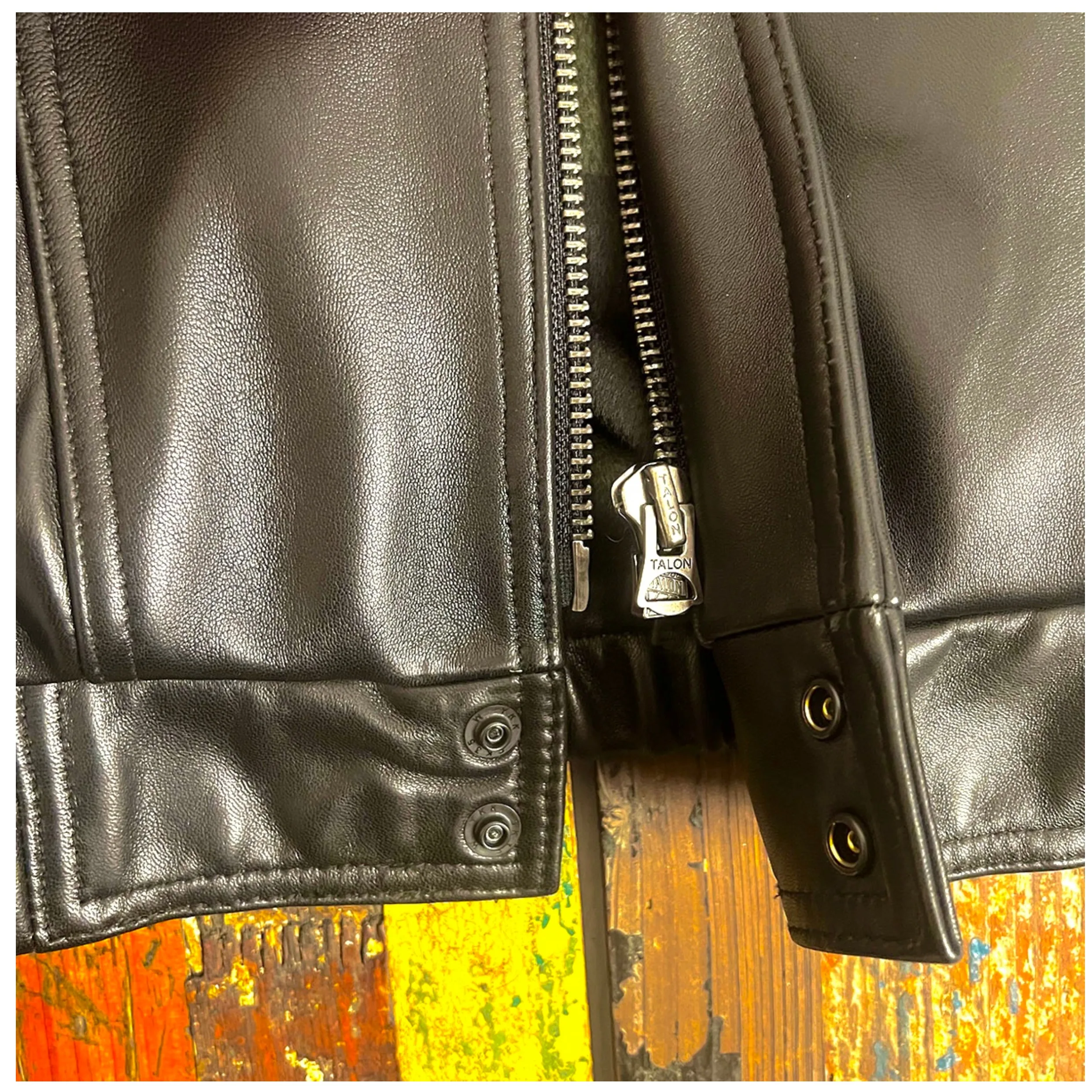
Maintenance and Care: Preserving Your Vintage Investment
Proper maintenance ensures your vintage tweed coat remains in excellent condition for years to come:
Regular Care:
* Brush after each wearing with a soft clothes brush in the direction of the nap to remove surface dirt and debris
* Allow the coat to air out for 24 hours between wearings to maintain freshness
* Use wooden hangers with adequate shoulder support to maintain shape
Cleaning:
* Spot clean minor stains immediately using a damp cloth and gentle blotting motion
* Seek professional dry cleaning services with experience handling vintage woolens, limiting full cleaning to once per season
* Avoid home washing or standard dry cleaning, which can damage vintage tweed’s structure
Storage:
* Clean thoroughly before storing for off-season
* Use cotton garment bags rather than plastic to allow fabric to breathe
* Place cedar blocks nearby (not directly on fabric) to deter moths
* Store flat or properly hung in a cool, dry closet away from direct sunlight
Common Issues:
* Address missing buttons by replacing entire sets rather than individual pieces
* Reinforce worn elbow areas with professional patches before holes develop
* Consult tailors experienced with vintage garments for structural repairs
Understanding the relationship between short versus long coats helps determine appropriate storage methods, as longer coats require more dedicated space and stronger hangers to prevent distortion.
Conclusion: Crafting Your Signature Tweed Style
The enduring appeal of a vintage tweed coat lies in its remarkable versatility and inherent character. From professional environments to weekend adventures, this heritage garment adapts to modern life while carrying subtle notes of tradition and craftsmanship.
The most successful tweed styling emerges when you balance respect for the garment’s history with your personal aesthetic preferences. Don’t hesitate to experiment within the frameworks we’ve explored—perhaps combining elements from different approaches to create a look uniquely yours.
What makes tweed particularly special in today’s fashion landscape is precisely this connection between past and present. By investing time in understanding and styling your vintage tweed coat thoughtfully, you’re not just wearing a piece of clothing—you’re participating in a continuing story of quality, durability, and timeless style.

